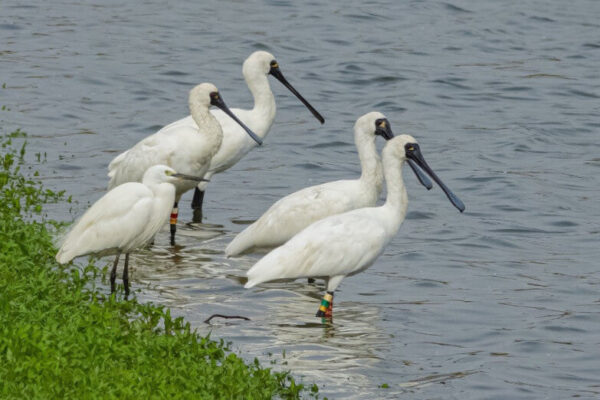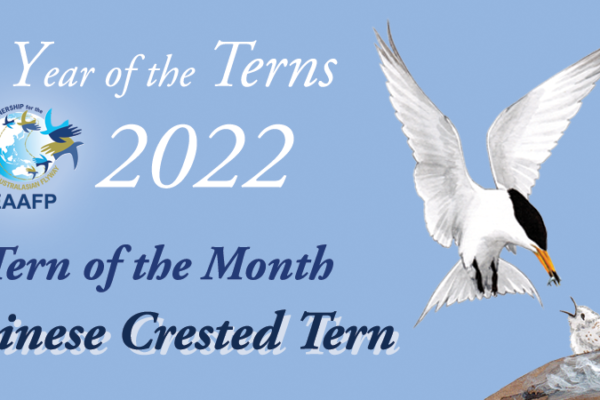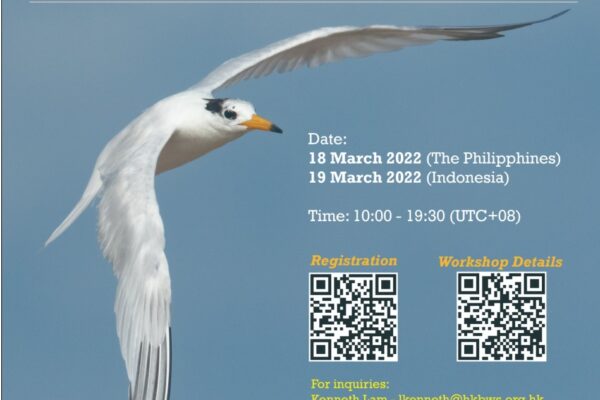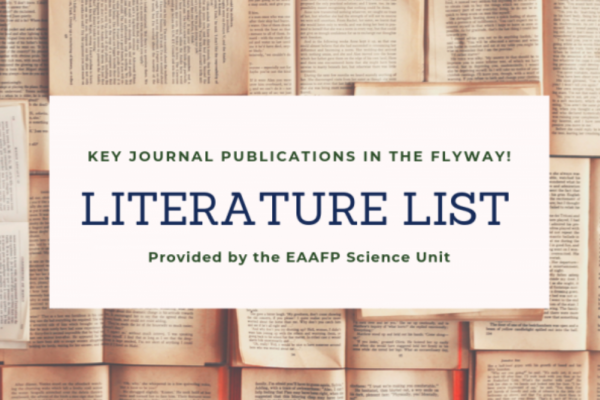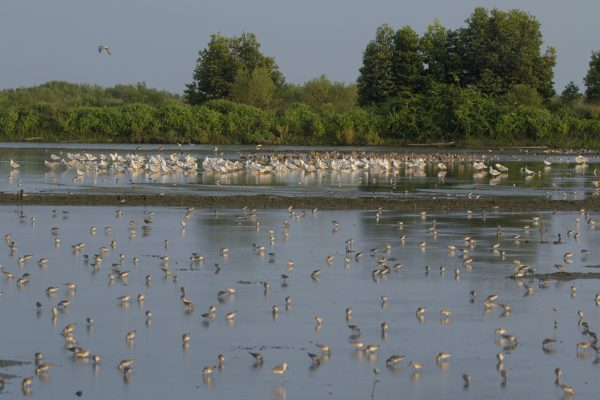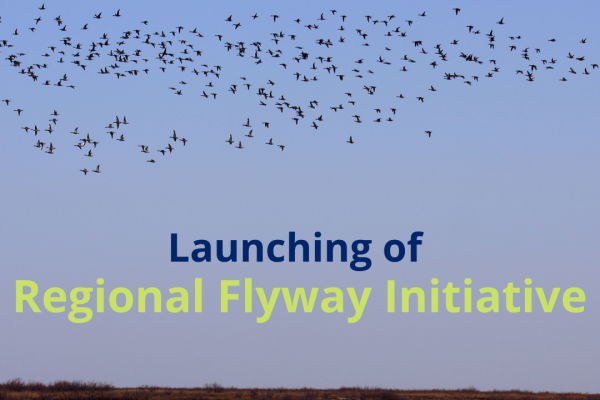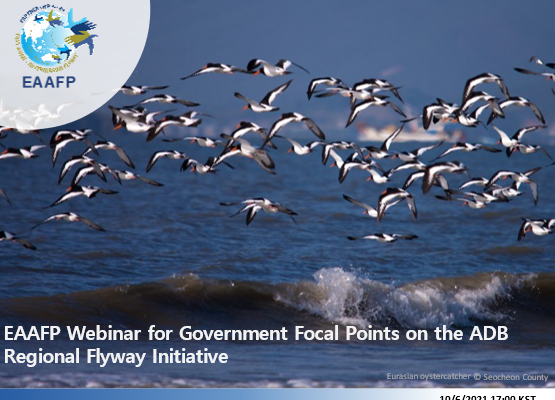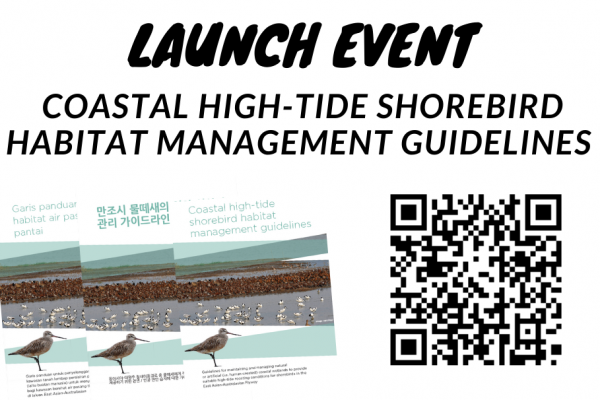-
ASEAN’s programme for youth storytellers
The ASEAN Centre for Biodiversity (ACB) (EAAFP Partner) is tapping into the power of the youth to tell stories from the field about biodiversity, its values, and the many ways to safeguard it, through its newest programme, the Young ASEAN Storytellers (YAS). The ACB is calling all ASEAN youth to showcase their skills and talents […]
Continue reading -
Endangered Black-faced Spoonbill breaking the record of over 6000
EAAFP Black-faced Spoonbill Working Group reported another record high of 6,162 for the global population of Black-faced Spoonbills (Endangered under IUCN Red List), with an increase of 18% (i.e. 940 individuals) compared to last year (5,222 individuals in 2021), based on the results of the International Black-faced Spoonbill Census 2022. The census was conducted from […]
Continue reading -
Chinese Crested Tern
Common name: Chinese Crested Tern Scientific name: Thalasseus bernsteini Local names: 中华凤头燕鸥 (Simplified Chinese), 中華鳳頭燕鷗/黑嘴端鳳頭燕鷗(Traditional Chinese), 뿔제비갈매기 (Korean), ヒガシシナアジサシ(Japanese), Dara-laut Cina (Indonesian), Camar Cina Berjambul (Malayu), Nhàn mào Trung Quốc (Vietnamese). Conservation status: IUCN – Critically Endangered, CMS – Appendix I The Chinese Crested Tern (Thalasseus bernsteini) is one of the rarest seabirds in […]
Continue reading -
Seabird Training Webinars for Southeast Asia
The Hong Kong Bird Watching Society (HKBWS, an EAAFP Partner) has been engaging with an international team established for the conservation of the Critically Endangered Chinese Crested Tern since 2009. Since 2016, the team started fieldwork in the wintering ground of the Chinese Crested Tern in Maluku, eastern Indonesia. From 2018 satellite tracking of Greater […]
Continue reading -
Successful Applicants of 2022 EAAFP WG/TF Small Grant Fund
* EAAFP Secretariat has deleted applicant’s personal information and bank details in the applications due to privacy matters *
Continue reading -
Literature list (July-December 2021)
1) Biology & ecology Conklin, J. R., S. Lisovski, and P. F. Battley. 2021. Advancement in long-distance bird migration through individual plasticity in departure. Nature Communications 12:4780. Wang, Y., I. Damba, Q. Zhao, Y. Xie, X. Deng, R. Ga, G. Liu, Z. Xu, Y. Li, D. Gao, W. Xu, G. Chen, and L. Cao. 2021. […]
Continue reading -
An uncertain time ahead for migratory waterbirds in South-east Asia
Sandwiched between the land masses of East Asia and Australia, South-east Asia lies near the geographical heart of the East Asian–Australasian Flyway, an important migratory corridor used by over 550 bird species. This includes several of Asia’s most threatened waterbirds. These species converge in South-east Asia in areas ecologically and geographically distant from their usual […]
Continue reading -
Official Launching of Regional Flyway Initiative
On 14th October, The East Asian-Australasian Flyway Partnership (EAAFP), in cooperation with the Asian Development Bank (ADB) and BirdLife International today launched the Regional Flyway Initiative (RFI), a long-term joint program to scale up the restoration of key wetland ecosystems and sustainable management in the East Asian- Australasian Flyway (EAA Flyway). The RFI is a […]
Continue reading -
EAAFP Webinar for Government Focal Points on the ADB Regional Flyway Initiative
On 6th October, the EAAFP Secretariat organized a webinar for EAAFP Government Focal Points on the Asian Development Bank’s Regional Flyway Initiative (RFI). The purpose of the webinar was to provide RFI eligible EAAFP country Partners[1] with more information on the Initiative and introduce the implementation plan of the Technical Assistance project for next […]
Continue reading -
Launch of “Coastal High-tide Shorebird Habitat Management Guidelines”
The EAAFP Secretariat, together with the Australasian Wader Studies Group are hosting a webinar “Launch Event: Coastal High-tide Shorebird Habitat Management Guidelines” on 17 September at 4pm – 5pm (KST). The editors of the guidelines will provide an overview of their content and the collaborative, evidence-based process used to develop the guidelines. A panel of experts, many […]
Continue reading


